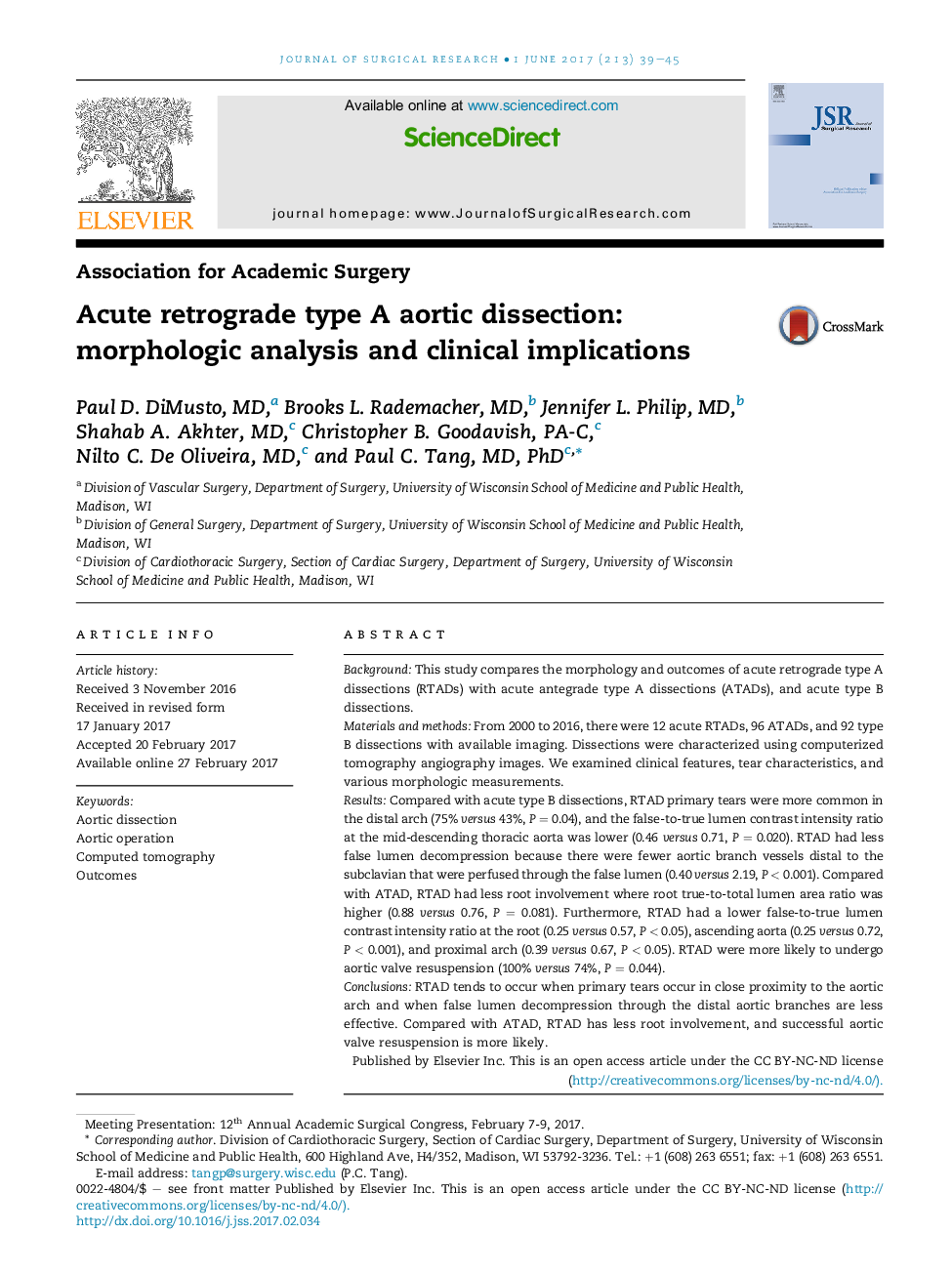| Article ID | Journal | Published Year | Pages | File Type |
|---|---|---|---|---|
| 5734078 | Journal of Surgical Research | 2017 | 7 Pages |
BackgroundThis study compares the morphology and outcomes of acute retrograde type A dissections (RTADs) with acute antegrade type A dissections (ATADs), and acute type B dissections.Materials and methodsFrom 2000 to 2016, there were 12 acute RTADs, 96 ATADs, and 92 type B dissections with available imaging. Dissections were characterized using computerized tomography angiography images. We examined clinical features, tear characteristics, and various morphologic measurements.ResultsCompared with acute type B dissections, RTAD primary tears were more common in the distal arch (75% versus 43%, PÂ =Â 0.04), and the false-to-true lumen contrast intensity ratio at the mid-descending thoracic aorta was lower (0.46 versus 0.71, PÂ =Â 0.020). RTAD had less false lumen decompression because there were fewer aortic branch vessels distal to the subclavian that were perfused through the false lumen (0.40 versus 2.19, PÂ <Â 0.001). Compared with ATAD, RTAD had less root involvement where root true-to-total lumen area ratio was higher (0.88 versus 0.76, PÂ =Â 0.081). Furthermore, RTAD had a lower false-to-true lumen contrast intensity ratio at the root (0.25 versus 0.57, PÂ <Â 0.05), ascending aorta (0.25 versus 0.72, PÂ <Â 0.001), and proximal arch (0.39 versus 0.67, PÂ <Â 0.05). RTAD were more likely to undergo aortic valve resuspension (100% versus 74%, PÂ =Â 0.044).ConclusionsRTAD tends to occur when primary tears occur in close proximity to the aortic arch and when false lumen decompression through the distal aortic branches are less effective. Compared with ATAD, RTAD has less root involvement, and successful aortic valve resuspension is more likely.
